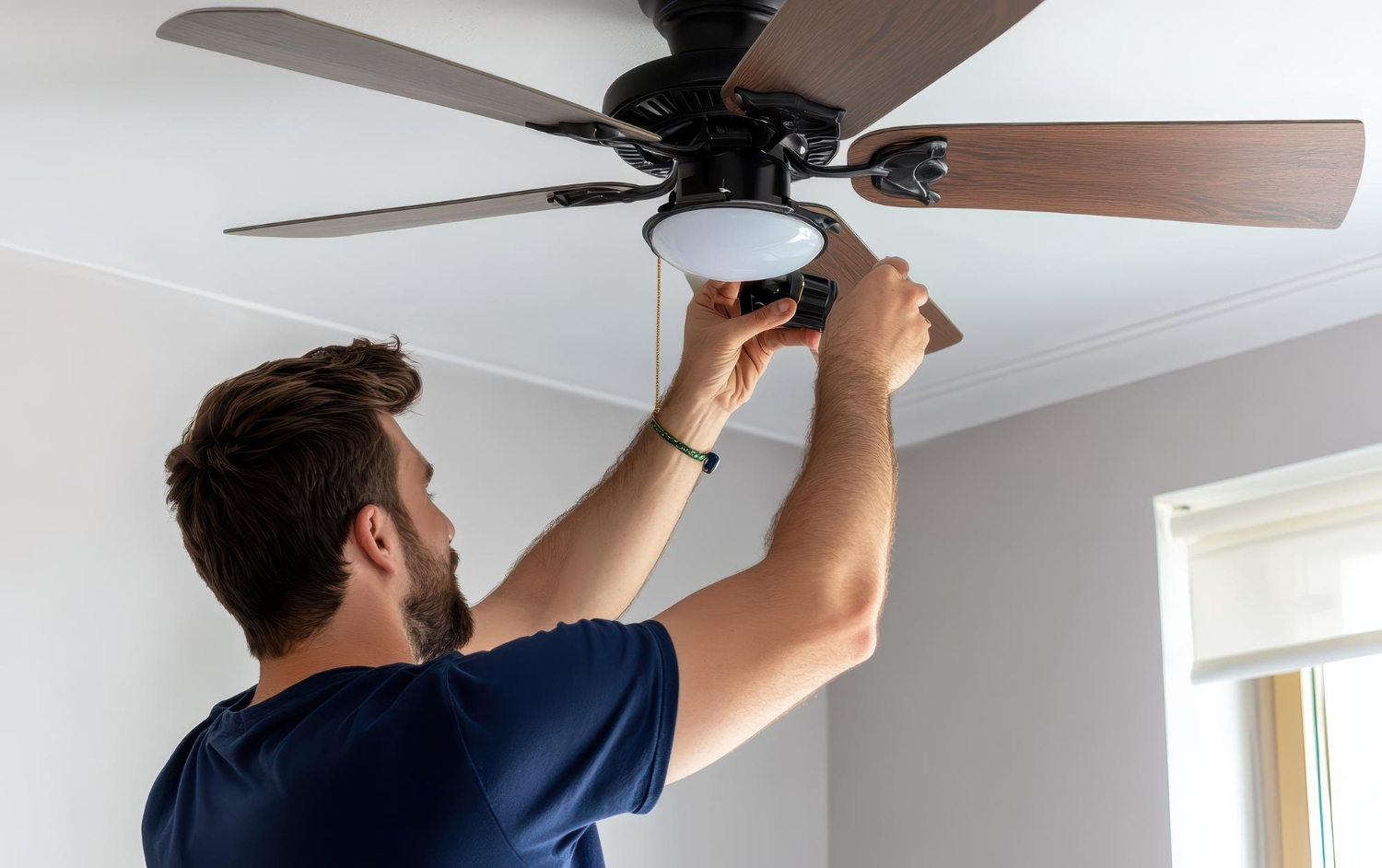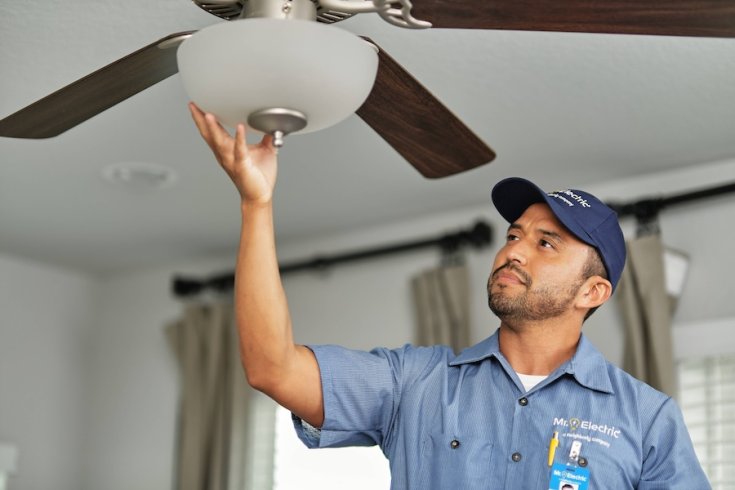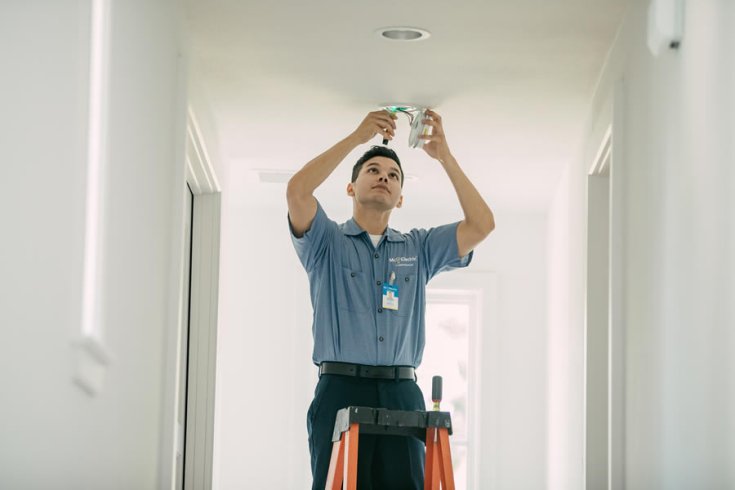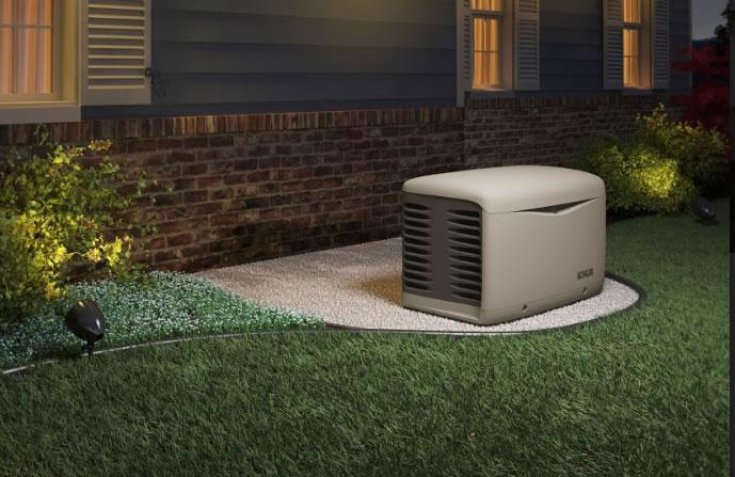Ceiling fans enhance the aesthetics and comfort of indoor spaces. Whether it is at home or the workplace, we rely on these appliances to provide refuge from the scorching heat outside. With summer around the corner, most people are dusting off their fans, ready for the hot weather. If your ceiling fans indicate signs of deterioration or malfunction, leave repairs and replacements to licensed electrical service providers. While DIY enthusiasts may prefer tackling ceiling fan problems by themselves, minor mistakes can exacerbate the problem. At Mr. Electric, we understand the satisfaction that comes with a successfully executed DIY project. That’s why we recommend steering clear of these common mistakes.
Ignoring Ceiling Height
The most common mistake DIYers make during ceiling fan replacement projects is ignoring ceiling height, which affects safety and airflow. According to electrical experts, the fan blades should be at least 8 to 9 feet above a building’s floor for optimal air circulation and comfort. Unfortunately, homeowners often leave the fan too low, causing improper air circulation and safety hazards. The best way to avoid such issues is to consult an electrician in Littleton, CO, ensuring accurate ceiling height and clearance for optimal efficiency.
Choosing the Wrong Fan Size
Another error to avoid during a ceiling fan replacement is choosing the wrong fan size. Different fans come in varying sizes, and choosing the wrong one can lead to a poor fit, aesthetic issues, and improper air circulation. To avoid this, measure the room’s size before selecting a fan. For smaller rooms, a 42-inch fan is ideal to create comfortable spaces without issues, while larger rooms may require a 52-inch fan or more. You don’t have to worry about getting the size wrong; reach out to a professional electrical service for guidance on fan size.
Not Turning Off the Power
Always check if the power is completely off before undertaking a ceiling fan replacement. Failing to switch off the power can cause shocks, fire hazards, and other safety hazards. Not to mention, the damage to your system may require professional electrical repair services to restore functionality. If you prefer a more hands-on approach, use a voltage tester to confirm no current is flowing to your appliance. This goes a long way in ensuring a more efficient and safer replacement process.
Incorrect Mounting
Proper ceiling fan mounting is crucial for stability and functionality. Incorrect mounting may not raise concerns initially, but it can cause wobbling, unusual sounds, and detachment when running. To avoid these safety risks, attach the fan to a suitable mounting bracket and secure it firmly. Additionally, position the ceiling fan at least 8 feet above the floor and 10 inches below the attached bracket on the ceiling. By ensuring your fan is properly mounted, you can rest assured that there’s effective airflow, head clearance, and overall safety.
Wiring Errors
When undertaking electrical repair projects, wiring errors are a significant concern. This extends to ceiling fan projects, as incorrect wire connections can cause electrical shorts, malfunctions, or even fire hazards. With this in mind, take note of the things you need to replace along with the fan, such as the different motors and belt drive. Always follow the proper wiring requirements and adhere to electrical codes to prevent safety hazards. In the case of uncertainty during the wiring process, consult a professional electrical service provider to ensure correct wiring, safe operation, and optimal efficiency.
Ceiling fan replacement is a crucial improvement project that can enhance the appeal and comfort of your living or working spaces. Contact Mr. Electric to avoid these common mistakes and enjoy more satisfying results. Our trained electricians leverage extensive expertise and knowledge to address your specific indoor comfort needs without breaking the bank.








